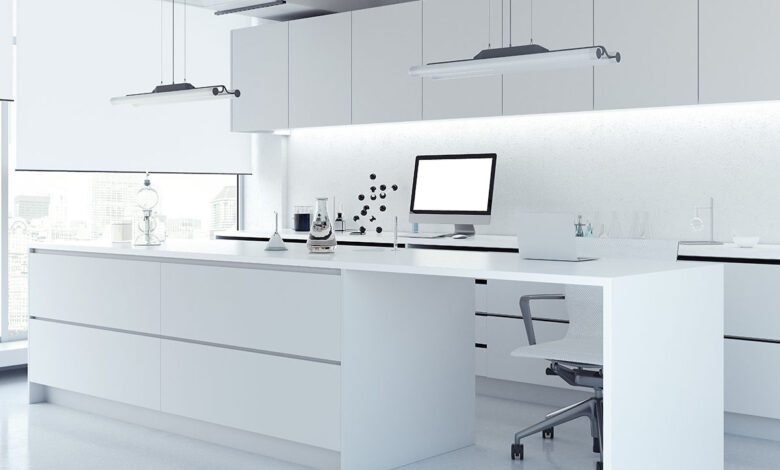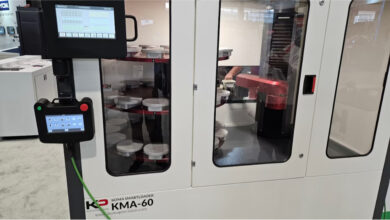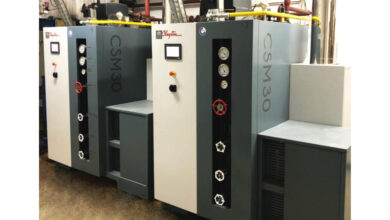Unique Needs of Residential Treatment Centers

Defining Residential Treatment Centers
Residential treatment centers (RTCs) are specialized facilities designed to provide intensive therapeutic care for individuals dealing with significant mental health issues, substance abuse, or behavioral challenges. Unlike outpatient services, RTCs offer a structured environment where clients reside on-site, ensuring continuous support and supervision. These centers cater to various age groups, including adolescents and adults, and are often seen as an alternative to hospitalization, providing a more homelike setting that promotes recovery.
Key Challenges in Facility Management
Managing an RTC involves addressing several unique challenges to maintain a safe and therapeutic environment.
- Space Utilization: RTCs must efficiently use space to accommodate therapy sessions, recreational activities, and living areas, ensuring a balance between privacy and community interaction.
- Safety and Security: Ensuring the safety of residents and staff is paramount. This includes implementing comprehensive safety protocols and maintaining secure premises to prevent unauthorized access.
- Regulatory Compliance: Adhering to local, state, and federal regulations is critical. This includes meeting health standards, fire safety codes, and ensuring proper staff qualifications.
Importance of Tailored Strategies
The success of an RTC heavily relies on implementing strategies tailored to its specific needs and the needs of its residents.
- Individualized Care Plans: Developing personalized care plans for each resident ensures that their unique needs are met, promoting more effective treatment outcomes.
- Community Integration: Facilitating connections with the local community can enhance the recovery process by providing residents with opportunities for social interaction and support.
- Staff Training and Development: Continuous professional development for staff ensures they are equipped with the latest skills and knowledge to provide high-quality care.
By understanding and addressing these unique needs, RTCs can create a nurturing environment that supports the recovery journey of their residents. My Five Palms, for example, emphasizes a holistic approach to mental health treatment, offering comprehensive programs that cater to individual needs and promote overall well-being.
Implementing Preventive Maintenance for Long-term Savings
Benefits of Preventive Maintenance
Preventive maintenance is all about being proactive. Instead of waiting for things to break down, you keep them running smoothly by checking and fixing them regularly. It’s a strategy that saves money in the long run by avoiding expensive emergency repairs and downtime. Plus, it extends the life of your equipment and facilities, making everything more reliable. It’s like giving your car regular oil changes instead of waiting for the engine to seize up.
Developing a Maintenance Schedule
Creating a maintenance schedule is like setting a routine for your facility. Start by listing all the equipment and systems that need regular attention. Then, decide how often each item needs checking or servicing. It might be weekly, monthly, or yearly, depending on the equipment’s use and condition. Stick to this schedule to prevent minor issues from turning into major problems. It’s also important to adjust the schedule based on real-world results and feedback.
Tools and Technologies for Maintenance
In today’s world, technology plays a big role in maintenance. Tools like Computerized Maintenance Management Systems (CMMS) help track maintenance activities and schedules. Sensors and IoT devices can monitor equipment in real-time, alerting managers to potential issues before they become serious. These tools make it easier to keep up with maintenance tasks and ensure everything runs smoothly. By using technology, facilities can maintain high standards of operation with less effort and fewer surprises.
Energy Efficiency Strategies for Residential Treatment Centers
Conducting Energy Audits
Energy audits are a systematic way to identify areas where energy use can be reduced in residential treatment centers. By examining various systems and components within the facility, managers can pinpoint inefficiencies and develop strategies to address them. Here’s how to approach an energy audit:
- Determine the Scope: Decide which areas and systems to include in the audit based on available resources and the complexity of the facility.
- Hire Professionals: Consider bringing in experts who specialize in energy audits to ensure a thorough evaluation.
- Analyze Findings: Use the data collected to identify opportunities for reducing energy consumption and lowering operational costs.
Implementing Renewable Energy Solutions
Incorporating renewable energy sources can significantly reduce energy costs and environmental impact. Here are some steps to consider:
- Evaluate Options: Look into solar panels, wind turbines, or geothermal systems that are suitable for your location and facility needs.
- Assess Costs and Benefits: Calculate the initial investment against long-term savings and environmental benefits.
- Plan for Integration: Develop a strategy for integrating renewable energy systems into existing energy infrastructure.
Cost-Benefit Analysis of Energy Efficiency
Conducting a cost-benefit analysis helps in understanding the financial impact of energy efficiency measures. This involves:
- Listing Potential Improvements: Identify all possible energy-saving projects, such as upgrading HVAC systems or improving insulation.
- Estimating Costs and Savings: Calculate the costs of implementation and the expected savings over time.
- Making Informed Decisions: Use the analysis to decide which projects offer the best return on investment and align with the center’s goals.
By focusing on these strategies, residential treatment centers can enhance their energy efficiency, reduce operational costs, and contribute to a more sustainable environment.
Optimizing Space Management in Residential Treatment Centers
Assessing Space Utilization
Understanding how space is used in residential treatment centers is crucial for optimizing its management. This involves conducting a thorough analysis of current space usage to identify areas that are underutilized or overcrowded. Here are some steps to consider:
- Conduct Surveys and Observations: Regularly survey staff and residents to gather insights on space usage. Observations can also help identify peak usage times and potential bottlenecks.
- Analyze Data: Use the collected data to identify trends and patterns in space utilization. This can highlight areas that need reconfiguration or additional resources.
- Prioritize Needs: Based on the analysis, prioritize which areas require immediate attention and which can be addressed later.
Designing Flexible Spaces
Creating adaptable spaces is key to accommodating the changing needs of residents and staff. Flexible space design can help maximize utility and improve the overall functionality of the facility. Consider the following strategies:
- Modular Furniture: Use furniture that can be easily rearranged or repurposed to suit different activities and needs.
- Multi-Functional Rooms: Design rooms that can serve multiple purposes, such as therapy sessions, group meetings, or recreational activities.
- Open Layouts: Implement open floor plans where possible to allow for easy reconfiguration of spaces.
Incorporating Technology in Space Management
Technology plays a vital role in modern space management, offering tools that can enhance efficiency and effectiveness. Here are some technologies to consider:
- Space Management Software: Utilize software solutions that help track and manage space usage, providing real-time data and insights.
- IoT Devices: Implement Internet of Things (IoT) devices to monitor environmental conditions and space occupancy, ensuring optimal comfort and efficiency.
- Virtual Reality (VR) for Planning: Use VR tools to visualize space changes before implementation, helping to make informed decisions about layout and design adjustments.
By focusing on these strategies, residential treatment centers can optimize their space management, leading to improved operations and a better environment for both residents and staff.
Enhancing Safety and Security Measures
Identifying Security Needs
Residential treatment centers must first figure out what kind of security they need. This involves assessing the layout of the facility, the number of residents, and any specific risks related to the treatment programs offered. A thorough security assessment might include:
- Risk Analysis: Understand potential threats, both internal and external, that could affect the safety of residents and staff.
- Vulnerability Assessment: Identify weak points in the facility such as poorly lit areas, unsecured entrances, or outdated security systems.
- Resident Needs: Consider the unique needs of the residents, including those who might pose a risk to themselves or others.
Implementing Safety Protocols
Once the security needs are identified, the next step is to establish comprehensive safety protocols. These protocols should be clear, actionable, and regularly updated to address new challenges. Essential components might include:
- Emergency Procedures: Develop clear steps for various emergencies, such as fires, medical emergencies, or security threats.
- Staff Training: Regular training sessions for staff to ensure they understand and can execute safety protocols effectively.
- Visitor Management: Implement a system to track and manage visitors to prevent unauthorized access.
Regular Safety Audits and Updates
Safety and security measures should not be static. Regular audits and updates are crucial to maintaining a secure environment. This involves:
- Routine Inspections: Conduct regular checks of the security systems and protocols to ensure they are functioning correctly.
- Feedback Mechanisms: Encourage staff and residents to provide feedback on safety measures, which can highlight areas for improvement.
- Continuous Improvement: Use audit findings and feedback to make necessary adjustments to the safety protocols, ensuring they remain effective and relevant.
Sustainable Practices in Facility Management
Understanding the Circular Economy
In facility management, the circular economy is all about reducing waste and making the most of resources. Instead of following the old-school “take, make, dispose” approach, facilities aim to keep materials in use for as long as possible. This can mean refurbishing old furniture instead of buying new, or finding ways to recycle materials like paper and plastic. This shift not only cuts down on waste but can also save money by reducing the need for new purchases.
- Asset Reuse: Instead of throwing away old furniture or equipment, facilities can refurbish or repurpose these items.
- Recycling Programs: Implementing programs to recycle paper, plastic, glass, and electronic waste.
- Energy Efficiency: Using energy-efficient technologies to reduce consumption and waste.
Incorporating Sustainable Materials
Choosing the right materials can make a big difference in sustainability. Facilities can opt for materials that are recycled or sustainably sourced. This might include using reclaimed wood for construction or recycled metal for fixtures. Sustainable materials often have a longer lifespan and can contribute to a healthier indoor environment.
- Recycled Materials: Use materials that have been recycled to reduce the demand for new resources.
- Sustainable Sourcing: Ensure that materials are sourced from suppliers who follow sustainable practices.
- Durability and Longevity: Choose materials that will last longer and require less frequent replacement.
Long-term Benefits of Sustainability
Embracing sustainable practices isn’t just good for the planet; it can also be beneficial for the bottom line. Sustainable facilities often see reduced operational costs over time, as energy-efficient systems and durable materials require less maintenance and replacement. Additionally, adopting sustainable practices can enhance the reputation of a facility, attracting clients and stakeholders who value environmental responsibility.
- Cost Savings: Long-term savings through reduced energy and material costs.
- Improved Reputation: Facilities known for sustainability can attract more clients and partners.
- Regulatory Compliance: Staying ahead of environmental regulations can prevent costly fines and penalties.
Vendor and Contract Management for Cost Efficiency
Selecting the Right Vendors
Choosing the right vendors is like picking the right partner for a dance. You need someone who can keep up and not step on your toes. For residential treatment centers, the stakes are high because the services they provide are critical. Here are a few things to consider:
- Reputation and Reliability: Always check references and past performance. A vendor with a solid track record is more likely to deliver consistent quality.
- Cost and Value: It’s not just about finding the cheapest option. Look for vendors who offer the best value for the services you need.
- Flexibility and Support: Can they adapt to your changing needs? Good vendors should provide excellent customer service and support.
Negotiating Contracts Effectively
Once you’ve selected potential vendors, the next step is negotiating contracts. This isn’t just about haggling over price; it’s about ensuring both parties are on the same page. Here’s how to make the process smoother:
- Clear Terms and Conditions: Make sure everything is in writing, from service levels to delivery times. This minimizes misunderstandings later on.
- Performance Metrics: Include key performance indicators (KPIs) to track the vendor’s performance. This helps in maintaining quality and accountability.
- Review and Adjust: Contracts should be living documents. Regular reviews allow you to make necessary adjustments as your needs change.
Monitoring Vendor Performance
After contracts are signed, the work doesn’t stop. Continuous monitoring ensures that vendors meet their obligations and maintain quality standards. Here’s what to focus on:
- Regular Check-Ins: Schedule periodic meetings to discuss performance and address any issues. This keeps communication open and proactive.
- Feedback Mechanisms: Implement a system for providing and receiving feedback. This helps in resolving issues quickly and improving the service.
- Documentation: Keep detailed records of vendor interactions and performance. This is useful for future negotiations or if problems arise.
Effective vendor and contract management can significantly reduce operational costs and improve service quality for residential treatment centers. By selecting the right partners, negotiating fair contracts, and continuously monitoring performance, these centers can ensure they receive the best possible services while keeping costs in check. For those seeking tailored treatment options in Florida, understanding these management strategies can be crucial in making informed decisions.
Leveraging Technology for Efficient Facility Management
Adopting IoT and Sensor Networks
In the world of facility management, IoT and sensor networks are game changers. These technologies allow managers to monitor building conditions in real-time, which helps in making informed decisions fast. By using smart sensors, facilities can track everything from temperature to occupancy, ensuring optimal energy use and comfort. This not only cuts down on costs but also improves the overall environment for residents and staff.
- Real-time Monitoring: Sensors provide immediate data on various building parameters.
- Energy Efficiency: Optimize heating, cooling, and lighting based on actual usage.
- Predictive Maintenance: Identify potential issues before they become serious problems.
Utilizing CMMS for Maintenance
Computerized Maintenance Management Systems (CMMS) are crucial for keeping facilities in top shape. These systems help in scheduling regular maintenance, managing work orders, and tracking asset performance. A good CMMS can streamline operations, reduce downtime, and extend the life of equipment.
- Scheduling Maintenance: Automate routine maintenance tasks to ensure nothing is overlooked.
- Work Order Management: Efficiently manage and prioritize repair tasks.
- Asset Tracking: Keep a detailed record of all facility assets and their conditions.
Data Analytics for Decision Making
Data analytics is becoming increasingly important in facility management. By analyzing data collected from various sources, managers can gain insights into operational efficiencies and areas needing improvement. This helps in making data-driven decisions that enhance facility performance.
- Operational Insights: Understand how facilities are being used and where improvements can be made.
- Cost Analysis: Identify areas where resources are being wasted and find ways to cut costs.
- Performance Metrics: Track key performance indicators to ensure goals are being met.
Budgeting and Financial Planning for Facility Management
Understanding Cost Drivers
Managing a residential treatment center’s budget begins with a clear understanding of the cost drivers. These can include:
- Maintenance and Repairs: Regular upkeep is essential to avoid costly breakdowns.
- Utilities: Energy, water, and other utilities can be significant expenses.
- Staffing: Salaries and benefits for maintenance and administrative staff must be considered.
By identifying these areas, managers can better predict and control expenses, ensuring that funds are allocated effectively.
Developing a Financial Plan
A solid financial plan is crucial for efficient facility management. Here’s how to create one:
- Set Clear Objectives: Define what the facility needs to achieve financially and operationally.
- Analyze Past Expenses: Review previous budgets to identify trends and areas for improvement.
- Forecast Future Needs: Anticipate future expenses based on historical data and expected changes.
This structured approach helps ensure that all financial aspects are covered and that the facility remains financially healthy.
Monitoring and Adjusting Budgets
Once a budget is set, ongoing monitoring is vital. This involves:
- Regular Reviews: Schedule monthly or quarterly budget reviews to track spending.
- Adjustments: Be prepared to adjust the budget in response to unexpected costs or changes in facility needs.
- Reporting: Maintain clear records of all financial transactions and adjustments.
By staying on top of the budget, facility managers can ensure that resources are used wisely and that the center can continue to provide essential services without financial strain. For instance, centers like Harmony Hills emphasize the importance of personalized care, which requires careful financial planning to support their comprehensive treatment programs.
Training and Development for Facility Management Staff
Identifying Training Needs
Understanding the specific training needs of facility management staff is the first step in creating an effective development program. It’s important to conduct a thorough assessment to determine what skills are essential for the team. This can involve:
- Surveys and Feedback: Gather input from staff on areas where they feel additional training is needed.
- Performance Reviews: Use past performance evaluations to identify skill gaps and areas for improvement.
- Industry Trends: Stay updated with the latest trends and technologies in facility management to ensure staff are equipped with current knowledge.
Implementing Training Programs
Once the training needs are identified, the next step is to implement programs that address these gaps. Effective training programs might include:
- Workshops and Seminars: These provide opportunities for hands-on learning and interaction with industry experts.
- Online Courses: Flexible and accessible, online courses can be a cost-effective way to provide training.
- Mentorship Programs: Pairing less experienced staff with seasoned professionals can facilitate practical learning and knowledge transfer.
Evaluating Training Effectiveness
It’s crucial to measure the effectiveness of training programs to ensure they are meeting the intended goals. This can be done by:
- Feedback Forms: After each training session, collect feedback from participants to understand what worked and what didn’t.
- Performance Metrics: Track changes in performance and productivity post-training to assess impact.
- Regular Reviews: Conduct regular reviews of training programs to update and improve them based on feedback and outcomes.
Emergency Preparedness and Response Planning
Developing an Emergency Plan
Creating a robust emergency plan is a must for residential treatment centers. This plan should outline specific procedures for a variety of potential emergencies, including natural disasters, health crises, and security threats.
- Risk Assessment: Begin by identifying the types of emergencies most likely to occur in your area. This might include earthquakes, floods, or power outages.
- Response Procedures: Clearly define the steps to be taken during each type of emergency. This should include evacuation routes, shelter-in-place protocols, and communication plans.
- Roles and Responsibilities: Assign specific roles to staff members, ensuring that everyone knows their responsibilities during an emergency.
Conducting Regular Drills
Regular drills are essential to ensure that both staff and residents know what to do in an emergency. These drills should be varied to cover different scenarios and should be reviewed and updated based on feedback.
- Scheduled Drills: Set up a calendar for regular drills, including fire drills, lockdowns, and evacuation exercises.
- Evaluation and Feedback: After each drill, hold a debriefing session to discuss what went well and what needs improvement.
- Continuous Improvement: Use insights from drills to refine and improve emergency procedures and training.
Reviewing and Updating Plans Regularly
Emergency plans are not static documents; they need regular reviews and updates to remain effective.
- Annual Review: At least once a year, review the emergency plan to ensure it aligns with current best practices and regulations.
- Incorporate Changes: Update the plan to reflect changes in facility layout, new technology, or lessons learned from past emergencies.
- Stakeholder Involvement: Involve staff, residents, and local emergency services in the review process to gain diverse perspectives and insights.





